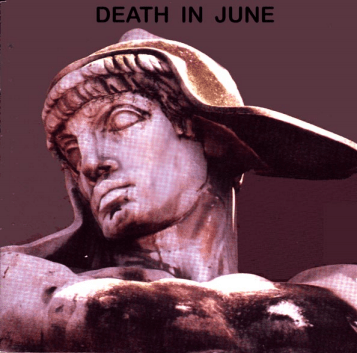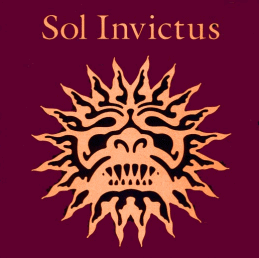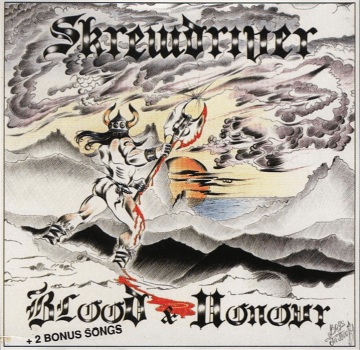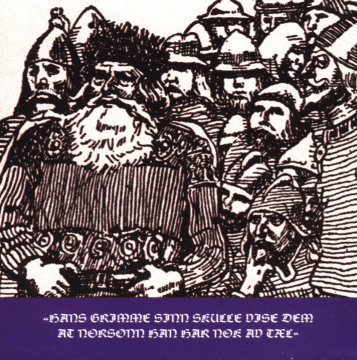The New Nationalist Music
Eric Owens, American Renaissance, November 2000
Popular music has had a heavy, leftist overlay since at least the 1950s. Pete Seeger, Joan Baez, and Bob Dylan made protest a central part of their message, and performers who are not as explicitly political continue to give popular music an unmistakably lefty slant. Like Hollywood, the recording industry has had a deliberately corrosive effect on every sentiment and tradition healthy nationalism requires. This is still true for most commercially successful performers but there is a growing musical subculture that reflects something entirely different: a resurgence of patriotism, national identity, and even racial consciousness. The mainstream media and the music press have carefully avoided publicizing this trend, but it is growing so quickly below ground that it cannot help occasionally breaking the surface.
What kind of music is this? Who are the performers? Is this just adolescent rebellion or do white power bands reflect real racial commitment? Most people have heard about skinheads but very few know about Apocalyptic Folk, NR, or Black Metal music. I have been part of this movement myself — first as a fan, later as an active performer — and believe I can report with some authority on a phenomenon nonparticipants are not likely to understand.
The skinhead movement began in England in the late 1960s when young people emerging from the Mod (short for Modern) youth culture followed the lead of rock groups such as The Who, and wore Mod clothing draped in the Union Jack. Skinheads took most of the Mod style — Doctor Marten boots, short hair cuts, patriotism, a penchant for scooters, loud music, and violence — and carried it even further.

Throughout the late 1960s and early 1970s the skinheads were, for the most part, non-ideological toughs, known for football hooliganism (rioting at soccer games) and Paki-bashing (beating up Pakistani or Indian immigrants). Among the first skinhead bands were Slade and Dexy’s Midnight Runners, the latter to become known for their international hit “C’mon Eileen.”
By the mid- to late 1970s the skin-heads were beginning to become politicized, and were welcomed by the Young National Front, the official youth wing of the National Front, which started enthusiastically promoting skinhead music. By the 1980s the term skinhead was firmly associated with nationalist groups like the National Front and the British National Party. There is still some association between skinheads and the British National Party, but the decline of the once-powerful National Front was due, at least in part, to a falling out with the musicians, who had been some of the party’s best youth recruiters.
It was during this period of political activism that a new skinhead-specific music movement took shape. This movement was called Oi! which was the Cockney word for “Hey!” and was a kind of white working-class battle cry for musically-oriented skinheads. It was by means of this music that skinhead politics went international. Thus, through the 1980s and 1990s, the movement was no longer associated specifically with England, but with disaffected white youth worldwide. By the 1990s, Oi! had largely faded in favor of even more racially charged music styles such as RAC (Rock Against Communism/Capitalism) and Hate Core (the latter being mostly an American phenomenon.) The most popular skin-head bands today are Skrewdriver, (England) Brutal Attack, (England) and Bound for Glory (USA).
Another less well known but highly influential development of the early 1980s National Front-era of British-turned-pan-European music is what is called Apocalyptic Folk. This movement draws less aggressive and often more intellectual audiences, and grew up around a little-known London-based punk band called Crisis. Tony Wake-ford, who had left Crisis to form a National Front band calledAbove the Ruins, rejoined Crisis bandmate Douglas Pearce in 1981. The group changed its name to Death in June, began to dabble in openly Nazi imagery, and started a movement.
Death in June began recording songs about the catastrophic effects of the Second World War on Europe and the decline of Western Civilization. Songs like “Death of the West” and “We Drive East” lamented the devastating conflict between Russia and Germany that ended the war, and the lack of honor, discipline, and high standards in modern European institutions. It is highly reflective music, mixing modern and medieval folk with more modern electronic sounds.
Besides Death in June, the biggest bands in this genre are Sol Invictus (Latin for Unconquerable Sun, a name for the Persian God Mithras revered by Roman soldiers), and Strength Through Joy (Ireland). Death in June and Strength Through Joy recently drew a crowd of 600 at the historic El Rey Theater in Los Angeles, to the dismay of the media and despite leftist threats.
A more recent form of music has sprung up around the French National Front. It is called NR music (short for Nationale révolutionaire). While its roots are in the Italian right’s Alternative Music from the 1970s, it has really begun anew in France with the help of National Front radio programs such as “Radio Courtoisie.” These bands avoid overtly racial themes, preferring to concentrate on the French Nationalist struggle. This music, also known as Rock identitaire (Identity Rock) often has a more pop-rock sound. These groups often work French medieval songs into their sets, a practice common in National Romantic movements the world over. The leading bands of this type are Ile de France, Vae Victus, and In Memoriam.
Yet another genre that has surfaced more recently is Black Metal. As its name suggests, it evolved from Heavy Metal. This movement didn’t really take off until the 1990s, and has just begun to go global, but is now one of the fastest growing underground music movements. From the beginning, Black Metal was a backlash against mainstream music. It sneered at the mainstream music industry’s watered down, effeminate rock musicians, and its performers tried to put a violent manliness and aggression back into rock music.
When Black Metal began in Norway it was openly Satanic, but has matured over the past several years. It is no longer so concerned with shock value, and has developed an ideology that has taken a hard turn to the right. Beginning with the bands Burzum (its name is a made-up word from the writings of J.R.R. Tolkein and signifies eternal darkness) and Dark Throne, the movement has traded in much of its alarming Satanism for aggressive nationalism, racial consciousness, and a celebration of Norse culture.
Like the Apocalyptic Folk bands, it is now quite common for Black Metal bands to include traditional folk songs on their albums. The cover art on their CDs is of traditional statues, artifacts, and nature scenes from the native countryside. Varg Vikarness, lead singer of Burzum has been chided by the music press for his unabashed racial statements, and violent nationalistic rhetoric.
Aside from ideology, an important development in this music has been its turn towards a medieval folk sound. One leading band, Ulver, known for fast, aggressive guitar and unearthly shrieking vocals, recently released a completely acoustic CD with medieval chorus, flutes, and classical guitar, in an amazing show of virtuosity that rivals any classical CD.
Storm, a group that broke away from Dark Throne, describes itself in its premier CD as National Romantic Music. This CD celebrates the glory of Norway and of Norse culture, including proud chants of “Hail Norway!” in its own brand of neo-traditional, folk-influenced, heavy-metal music. Half the songs are Norwegian folk tunes, played electrically and aggressively. This has been a very influential CD, with new bands such as Sweden’s Vintersorg imitating this medieval-operatic heavy-metal style. The leading racial Black Metal bands are Graveland, Veles, and Gontyna Kry.

While MTV would lead us to believe that young people want nothing but self-indulgence, tens of thousands of aggressively patriotic and racially conscious CDs are sold every year on independent record labels — without any mainstream publicity. Some of these sentiments have occasionally appeared above-ground.
Until just a few years ago, the Englishman, known only by his performing name “Morissey” and former front man of The Smiths, was topping charts all over the world. That was until the 1992 release of possibly his best-produced, most well thought out and musically advanced CD to date, “Your Arsenal.” On this CD Morissey voiced concern for the future of his country with songs like “National Front Disco,” and there are clearly nationalist sentiments throughout the album. The same British press that used to fawn over him quickly dubbed him a fascist and consigned him to worldwide obscurity.
Some may remember the Swedish group Ace of Base whose CD “The Sign,” released in 1994, was the number-one selling album in the world. At the height of its popularity, with multiple hits to its credit, it came out that founding member Ulf Eckberg had a history as a racial activist in Sweden. While Madonna, and even nonentities like Cher continue to churn out uninspiring CDs for decades and get endless air play, a racially-conscious past guarantees any musician, no matter how talented, a one-CD career.
The rock group Ultima Thule from Sweden recently had a number-one hit on the Swedish charts, by electrifying and performing an Oi! version of the Swedish national anthem, “Du Gamla Du Frig.” This chart-topper got Swedish youth tapping their toes to their national anthem and brought the Swedish flag and the Thor’s Hammer pendant back into vogue until a smear-by-association campaign ended a short-lived but highly successful musical career. Critics discovered that Ultima Thule used to be on a white power record label from Germany called Rock-O-Rama, and had appeared on a white power compilation called “No Surrender!” along with British National Front bands such as Skrewdriver, Brutal Attack, and Above the Ruins. On their own albums Ultima Thule had never mentioned non-whites or used racial slurs.
The German group Böhse Onkelz (the Evil Uncles) hit number two on the German charts, and suddenly disappeared from view just like Morissey, Ace of Base, and Ultima Thule after the discovery of similar past associations. In the United States as well, Time Warner dropped the heavy metal band Morbid Angel shortly after the lead singer expressed certain views publicly.
A couple of fairly mainstream American heavy metal bands have narrowly escaped the media blacklist, largely because they’ve not quite reached superstar status. Pantera, possibly one of the biggest and longest-running heavy metal bands in America got into trouble when singer Phil Anselmo sported a T-shirt emblazoned with the three-pronged symbol of the South African Afrikaner Resistance Movement during an MTV interview. Mr. Anselmo also went on a couple of racial tirades from stage while on tour, but with a lot of back peddling he was able to save his career.
A group called Type O-Negative, has been made to answer a lot of questions about some extremely racially provocative songs they recorded previously under the name Carnivore. Unlike most bands,Type O-Negative offered no apologies and still enjoys as much success as its talents merit.
Not so lucky was the well-known heavy metal performer Glen Danzig. He expressed racial views publicly in magazine interviews, and even went so far as to record a song called “White Devil Rise!,” which he later declined to release on CD. He was dropped from American Records shortly afterwards.

Finally, the old standby, Ted Nugent, hardly a representative of any New Right youth movement, was recently threatened by the League of United Latin American Citizens for declaring that anyone in America who doesn’t speak English should leave. Mr. Nugent also made no apologies.
Thugs or Thinkers?
So what do we have here: a bunch of drunken thugs out to shock their parents or a thriving underground of racially-conscious young people making and listening to their own brand of exploratory music? Both, really. Something people must understand about these movements is that they are meant to shock. They are rebellions and draw rebellious young people. Many of their followers will never straighten out their lives no matter what kind of music they like. They were corrupted by MTV, bad parents, and a miserable public school system long before our music reached them. We can’t expect more from the average skinhead than we can from the average white American of any kind.
The importance of these movements is that they offer ideas to many middle-class whites who may simply be passing through a period of teenage rebellion — ideas to which they might not otherwise be exposed. I myself was brought into racial consciousness through the skinhead movement and through music in particular. When today’s teenagers go on to college or a career many will hold on to the ideas they picked up during their rebellious youth. Just as the corrupt ideology of the drug-filled hippie and communist movements of the 1960s did not fade away, but instead moved quietly into positions of power, one can already distinguish the rise of an intellectual and successful youth elite in the racial movement in America. These are not people who would have joined the Klan in the 1960s or 1970s, and I believe they will be able to give far better racial leadership than they ever received.
There are also benefits for the more mediocre fans who will never amount to much. They learn to take pride in their race, not to miscegenate, not to take drugs (though there is much drinking of alcohol), and not to practice abortion. Outsiders have no idea how militantly the overwhelming majority of skinheads follow these rules. So, while these music cults may not be Ph.D. training camps, they are the one organized means today of fostering racial consciousness in young whites. For the worst among them, it also offers a life without drugs, and for those who will be more successful it lays the groundwork for a racial worldview that will guide them through life. These young people have a fierce and troubled appearance, but ideologically they are much better off than the average teenager.
However unpleasant much of this music may sound to the older generations, it reaches the MTV generation in a way that books do not. It is all very well for their racially conscious elders to write carefully-footnoted research papers about immigration or IQ, but they have been doing this for years with few results.
The older generation complains about the biased media but the skinheads and other youth cults have succeeded where their elders have failed: They have created their own media. With glossy color magazines like Resistance and slickly packaged, well produced recordings, they have completely cut the mainstream music industry out of the picture. So, while we complain about the state of our media, and continue to give money to Time Warner they give a large amount of their entertainment budget to a pro-white industry owned by pro-white organizations.

Liner art for Norwegian band Storm.
Even its most hostile detractors must recognize the powerful appeal of this new music. It has become widespread despite the fact that in Europe and Canada it is illegal to express certain racial ideas, and you can get fines and jail sentences for possession of these CDs. In Germany, France, and many other European countries, white power CDs are treated as contraband, just like drugs. Customs officials confiscate packages with addresses from known white power distributors or directed to suspected European distributors. Police routinely raid the homes of young people they think are selling these CDs. People caught with what is judged to be a commercial quantity get fines up to the equivalent of $10,000 for the first offense, and may be jailed at the court’s discretion. Young people will not take risks of this kind to distribute books by Philippe Rushton or Arthur Jensen.
The entertainment industry is profitable. Because the mainstream media will not touch white racial consciousness, it means that this important source of funds stays entirely within our movement. For whatever it’s worth, the Anti-Defamation League’s estimate of the annual revenues of Resistance Records is one million dollars. And Resistance is just one of many magazines and record labels around the world.
Today’s huge media corporations promote black performers who encourage drug-taking, violent abuse of women, murder, and hatred of whites while they vilify any white who dares sing about love of country and culture, or respect for veterans, the elderly, women, family, children, hard work, and racial heritage. The media and the music industry have succeeded in turning morality on its head. Racially-conscious music could help set things straight again.















